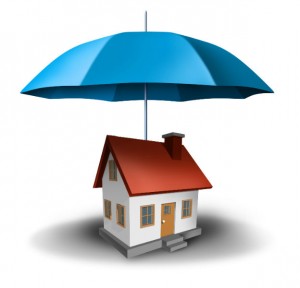Keeping It Dry
If you own a fireplace or chimney then you already know that there are many steps you must take to prevent your wood-burning heating system from falling into disrepair. It is critical to get your chimney inspected and swept every season to prevent dangerous creosote buildup and to make sure that there are no animals nesting inside your chimney but one thing that many home-owners are not prepared to hear is that they have damage to their chimney caused not by fire and its byproducts but by water. While to some this may seem counter intuitive it is in fact the leading cause of damage to chimneys.

Keeping as much moisture out of your chimney as you can is critical to expanding the life of your system.
A chimney is a masonry structure and is especially exposed to the elements. At least 3 of the 4 walls of your chimney are exterior walls and sit above your roofline where the wind whips undisturbed by buildings and trees. This exposes it to a battery of wind, rain, sleet, snow, and other climate conditions that can cause serious damage to brick and mortar structures. Moisture can get into cracks in the masonry and freeze and thaw causing expansion and contraction which can do severe structural damage. This will cause more cracks to appear allowing more moisture to get into your chimney which will compound your problem exponentially. Before you know it you have a chimney that is unsafe to use and may in fact be in danger of collapsing all together. Luckily there are steps that can be taken to minimize this risk.
The single most important thing you can do is to have a certified chimney sweep come out and inspect your chimney. When a sweep does their inspection they will look for cracks and water damage and may suggest that your chimney needs a new waterproofing treatment. Contrary to what the name suggests a waterproofing treatment does not actually make the chimney entirely waterproof and believe it or not that is a good thing. As smoke rises through the chimney it cools and can produce creosote and moisture. If the chimney is completely waterproof there will be no way for the moisture to escape the chimney and you are left with the same problem you sought to fix in the first place. A chimney waterproofing treatment actually involves the application of a vapor-permeable sealant that allows air to escape the chimney but keeps rain and other forms of moisture out. This is painted onto the chimney similarly to how you would seal a driveway or other masonry surface. Again it is very important to allow a certified chimney sweep to perform this as the wrong compound or application could cause more damage than you originally are dealing with.
Another important step to maintaining a safe and dry chimney is to have a chimney cap installed. Chimney caps perform a variety of jobs but one of the most important things that they do is keep rain and other precipitation from going into the hole at the top of your chimney. Additionally they will help keep animals and debris from entering the chimney which is also important in keeping your fireplace in working order. One more big step in preventing costly water damage is to make sure that water drainage systems direct the water away from the chimney. If your roof slope directs water towards the chimney or traps in in pools around the masonry it is much harder to prevent that water from seeping into your chimney. If your roof does channel water toward your chimney look into gutter systems that can carry that water to another point and off your roof. This is a great opportunity to direct the water into rainwater buckets that can be used to water plants or wash cars.
The single most important thing to take away from all of this is to have your chimney inspected by a certified chimney sweep at least once a year. It is much better to catch problems like these early to prevent a costly repair on down the line. If you take the proper preventative steps it could be the difference between having a safe and functional fireplace and having a pile of bricks on the ground.
